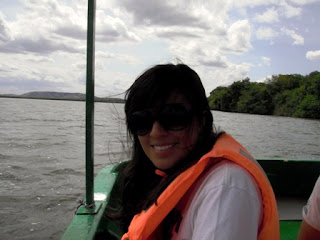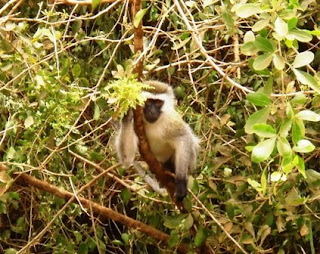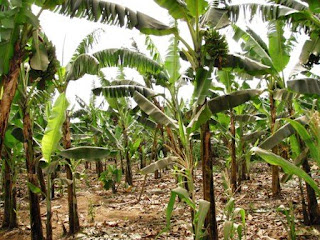week, we will be compiling data and creating documents summarizing the
effect of the intervention and results obtained from surveys, focus
groups, and assessments. (More on focus groups and assessments later).
That means that until Friday, we will be locked up in the MMHF offices
working away on our computers looking at a whole bunch of words and
numbers…
I will take a break, however, to share some stuff about daily life in Mbarara.
The team from Duke Engage, whom I did not introduce earlier, is a
group of 10 Duke undergraduate students; 3 rising seniors (Paul,
Jesse, and David), four rising juniors (Naima, Gregory, Eddie, Josh
and me), and 2 rising sophomores (Marquise and Alex); and two on-site
coordinators hired by Duke Engage (Jacques and Peter). Yes, this does
mean that out of the 12 team members, there are only three girls.
However, the group is actually quite diverse. The group includes every
major race in the USA, a variety of family backgrounds, different
majors, and very unique personalities, each contributing to the
dynamics and grooviness of the group. I feel pretty lucky to have been
able to get to know a lot of the team over the past few weeks, and I
am sure that a lot of long-lasting friendships have been fostered.
last 8 weeks that we have been living in Mbarara. Like I mentioned in
an early entry, the hostel usually houses students from Mbarara
University of Science and Technology, but classes are not currently
going on because the students are on break so we have essentially been
the only ones in the hostel for a long time, with a handful of other
people here and there. It is a fairly large hostel, but luckily we all
live in the same area of the hostel, with all but two of the boys
living on the first floor and the girls living on the second floor. We
have been fortunate enough to get our own rooms – although I should
note that after an unfortunate event involving Marquise waking up with
a grasshopper on her face during the first week, the other two girls
moved her bed to Naima's room and they are now roommates. Otherwise,
each room has two cement desks built into the wall, a bed, and two
small built in closets. Additionally, you will find a mosquito net
over each bed. Also, every room has a window, which is nice, and
Naima's room has a balcony.
In addition to our bedrooms, Gordon, the hostel manager, has allowed
us to keep a fridge in a spare room and a large table, forming a sort
of common room and fruit storage place – if you were to walk in there
now, you would find a fridge stocked with drinks and snacks, as well
as a table with about 5 pineapples and a couple of papayas on it, and
an enormous bag of passion fruit. These three fruits I just mentioned
and also bananas and mangos compose our entire selection of fruits
during this trip. There is also a fruit called jackfruit, but most of
us find it pretty unpleasant, and some have described its smell as "a
cantaloupe that was carried under someone's armpit for hours."
Speaking of meals, the hostel has a nice dining room with many plastic
tables and chairs and a couple of small TVs that are constantly tuned
into National Television or the news channel. We eat breakfast and
dinner in the hostel every day, unless we decide to go out for dinner,
maybe once a week. Breakfast involves one of the following: chapatti,
a flat tortilla-like bread; green onion omelette; sweet bread muffin;
white bread with butter and honey; or samosas, and is accompanied by
either fresh pineapple or papaya, and always taken with either black
garden tea, hot milk, or African tea, which is the black tea brewed in
hot milk. Dinner is buffet-style where rice, matooke (mashed
plantain-like things), cabbage, and beans are always offered and a
couple of other options are rotated daily, such as chickpeas, g-nut
sauce (a mushy sauce made of ground up g-nuts, a small, local,
purplish nut that tastes a lot like peanuts when raw), Irish potatoes,
spaghetti, and on good days, avocado, roasted beef or goat chunks, and
chicken in a broth. Otherwise, the options do not vary at all. I end
up eating rice, beans, and cabbage on most days because I don't really
like most of the other common options. As for drinks, we get to choose
one 300ml of the soda of our choice for dinner every night. In
addition to Coca Cola, 7up, Pepsi, Sprite, Mountain Dew, and Orange
Fanta, Uganda is keen on a couple of other sodas, including Citrus
Fanta, Passion Fruit Fanta, Mirinda Orange (like Fanta), Mirinda
Pineapple, Mirinda Fruity (berries), Krest (bitter lemon, and Stoney
(ginger-flavored soda – much stronger than ginger ale, very strong on
the ginger…). Of course, there is also bottled water.
 Gregory and Naima participating in two different conversations after dinner (you can also see two empty bottles of Fanta)
Gregory and Naima participating in two different conversations after dinner (you can also see two empty bottles of Fanta)As for personal hygiene, each floor of the hostel has community
showers, sinks, and toilets. The water is in fact, cold, so I have
become very accustomed to compartmentalizing my body sections and
showering one part at a time so as to avoid being under a cold stream
for long periods of time. The toilets upstairs are Western-style, but
downstairs they are latrines in the ground, so the boys have learned
to live with that. Otherwise, everything is pretty good. Occasionally
we find a spider, fly, bee, moth, cockroach, gecko, or two in the
showers and stalls when we check them before entering, but things
actually are a lot better than the first two weeks when giant
grasshoppers were dominating the hallways and bathrooms. One insect
complaint I do have, though, is that there is a never ending
population of ants all over the hostel – they generally mind their own
business, unless you regretfully leave a little bit of food out or
even a crumb on the ground. It is amazing, but in less than 30 minutes
ants will smell that out and mobilize to go and collect the goodies,
so by the time you get back to your room there is an entire line of
ants with an unidentifiable entry point into your room (sometimes its
electrical outlets, or other random holes in the walls). Additionally,
ants will get in your laptop and come out when you turn it on and it
heats up, and they are also a big fan of dirty clothes. Oh, and you
have to hang your toothbrush and toothpaste from a clothes hanger in
your closet if you don't want the ants to get to it.
Speaking of dirty clothes, the hostel has staff that washes our
clothes once a week, except for our underwear, which we wash ourselves
in plastic bins with powdered detergent in any of the community
laundry rooms on each floor. The clothes and sheets they wash are
dried in the sun on clothes lines that are set up on a small lawn
behind the hostel.
This entry is getting very long so I will continue later… I hope this
provided some insight into daily life in Mbarara…


































